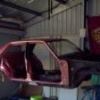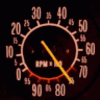Simple Carb Tips!
#1

Posted 03 November 2006 - 05:48 PM
http://www.carcraft....eap/index1.html
Check it out, some really interesting information in there!
Cheers!
#2

Posted 03 November 2006 - 07:13 PM
a good read there.
Evan
#3

Posted 03 November 2006 - 07:43 PM
#4

Posted 04 November 2006 - 03:28 PM
On ya.
#5

Posted 04 November 2006 - 03:42 PM
I was just lucky that someone else posted it and i was able to steal it from them!
Great site and i think teh carby info will help answer quite a few basic questions that are asked repedetively!
#6
 _73LJWhiteSL_
_73LJWhiteSL_
Posted 24 December 2006 - 03:09 PM
When i nearly snapped my accelorator cable, I discovered that my carb wasn't opening all the way. It still doesn't open all the way, but its opens closer to 90% of the way now instead of the 60% it opened before...
I love free horsepower
Steve
#7

Posted 03 February 2007 - 08:35 PM
#8
 _maxpower1000hp_
_maxpower1000hp_
Posted 01 April 2008 - 12:41 AM
here`s the holley site http://holley.com/Te...nstructions.asp
#9
 _threeblindmice_
_threeblindmice_
Posted 15 April 2008 - 12:08 PM


#10

Posted 21 May 2008 - 12:21 PM
A friend of mine drilled the hole in the butterflies of Tracie's 500 Holly and it made a big differance to the idle, take off (no flat spot) and starting the engine (no throttle to start it).
Idle Speed Deeds
Big cams and low idle vacuum can make for an off-idle stumble that'soften tough to cure. The problem stems from cranking the primarythrottle blades open too far, which uncovers too much of theidle-transfer slot (arrow). When you lightly step on the throttle, theengine stumbles or sneezes because there's no additional fuel availableto help accelerate the car, since the transition slot is already in use.The trick is to close the primary throttle blades down to where thetransition slot is barely uncovered.
This step will create a too-low idle speed. One way to help that is tocrack open the secondary idle stop (located on the bottom of mostHolleys on the passenger side) a half-turn or so. If that doesn't help,you might try adding a PCV valve to the carb, which is also a calibratedair leak that will add a little speed. If all those tricks still don'thelp, you will have to resort to drilling a small hole in each primarythrottle blade on the leading edge. Start with a 1/8-inch hole in eachprimary throttle blade and work up one size at a time. It's a slowprocess, but that's the best cure for the big-cam off-idle stumble.
#11

Posted 20 November 2015 - 04:13 PM
Found this Link about SU's to be good:-
https://classicmotor...s/simple-carbs/
and big bowl additions for Ethanol:-
http://www.sumidel.c...bowl-conversion
#12
 _boingk_
_boingk_
Posted 28 May 2019 - 01:37 AM
The advice above has long since been buried by the internet, with the exception of the Holley Help Page.
My two cents would be to start with a new aftermarket carburetor, or return your secondhand one to stock. Holleys in particular will work nicely on a wide variety of engines with stock settings, often a tad rich from factory but otherwise quite good. Due to them being relatively unsophisticated, they are fairly easy to work with. I would recommend an 'operating window' using two numbers - both using the CFM rating.
To size a carburettor for you engine look at the stock horsepower - say you have a 150hp stock rated engine. Times this by 4 to get the max CFM you should run, in this case 600CFM. If you get an odd number just round up. What if you're looking for the max HP you can get out of a given combo, and need a carby to suit? Easy. You need roughly 1.5CFM per horsepower, so that same 600CFM unit will run up to roughly 400hp. The rule of thumb is use the smallest carby that will allow your peak horsepower, so a 600CFM will work just fine right up to a 350~400hp V8 and only after this will you really benefit from using a 750CFM unit.
2 barrel or 4 barrel? To start, ratings differ between 2bbl and 4bbl so divide your 2bbl rating by 1.33 to get a 4bbl equivalent rating. So a 350CFM 2 barrel Holley is really rated at 260CFM, and the 500CFM is truely rated 375CFM. The 350CFM will work nicely on smaller engines, between 100 and 150HP, and the larger unit will be nice on larger engines such as moderate to large capacity sixes making 150 to 200hp. For example, a 500CFM unit will be nice on a stock or mildly modified Chrysler 245 or Ford 250ci 6cyl, and a 350CFM would be good on a Ford 170 or Holden 161/183.
The 4 barrel carburettors allow venturi speed to be kept up by only opening the extra set of barrels as needed. Vacuum secondary operated carburettors are great for daily drivers and mild applications, with mechanical secondary units being much more performance oriented. If you plan on having it street registered I'd always recommend a vacuum secondary unit, they work nice and smoothly and aren't hard to set up. Racing may benefit from a mechanical secondary unit as you get more instant response from the engine and can have more control over the mixtures.
So, that's carburettors in a nutshell. I obviously favor Holleys and that's because they are reasonably priced, universally available, and easy to work on with nothing more than a screwdriver (or leatherman) 95% of the time. By virtue of them being relatively simple, they do not have complicated arrays of tapered rods and metering jets, emulsion tubes and so on, and can be relied on even after periods of relative neglect. For the weekend enthusiast and backyard mechanic this is a perfect combination of attributes.
Hope this helps - boingk
1 user(s) are reading this topic
0 members, 1 guests, 0 anonymous users





 View Garage
View Garage












